Don't Break The 6 Golden Rules Of Marinating Steak
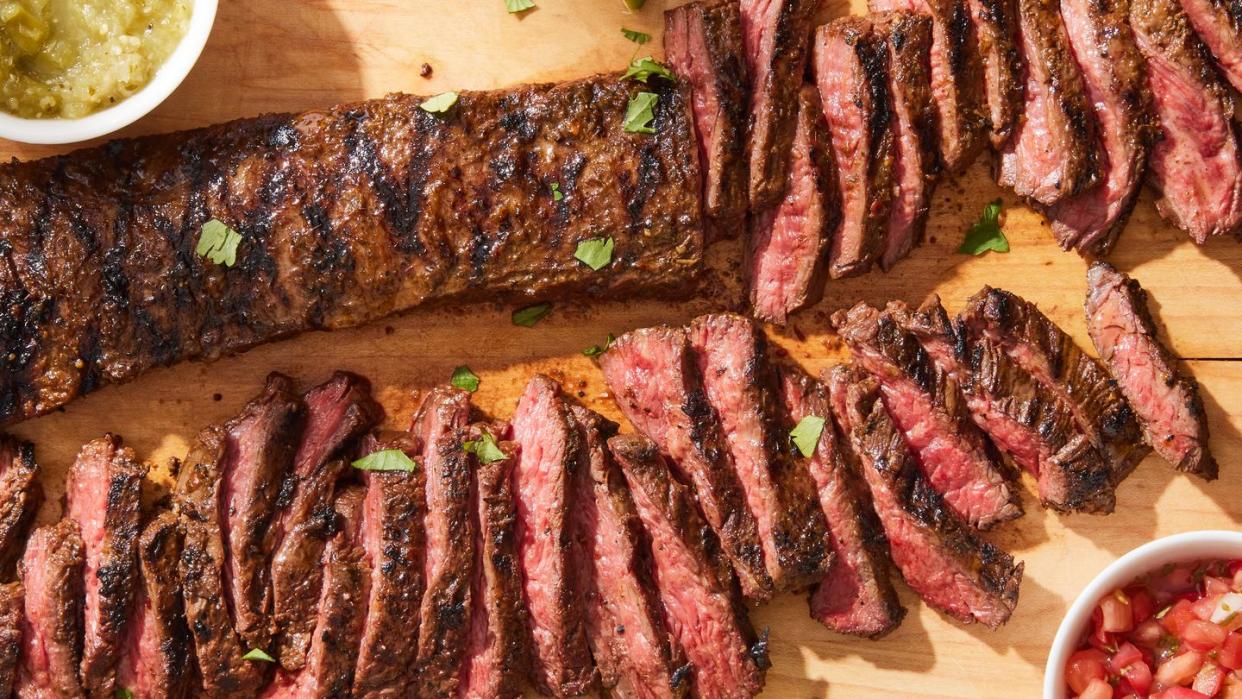
A gorgeous ribeye needs nothing more than a hefty dose of salt and a little black pepper to make it perfect. But what if you’re in the mood for something different? And what if you're working with a cut of steak that’s not as inherently delicious? as ribeye. It's time for a marinade.
What Steak Marinades Do (and Don’t Do)
At its most basic level, a marinade is a combination of fat, salt, sugar, acid, and aromatics. According to Ashley Lonsdale, chef-in-residence at ButcherBox, a marinade “imparts flavor and improves the texture of steak” by increasing its moisture retention. It also enhances browning. The result? A juicier, more flavorful piece of meat.
Contrary to popular belief, marinades do not tenderize steak. Both the acid and salt in the marinade can denature the proteins, which will lead to a softer texture on the surface of the meat, but this isn’t the same as tenderization.
Rosemary Trout, program director of culinary arts and food science at Drexel University, says that marinating your steak for too long or in too much acid will actually “cause sourness and a mushy outer texture.” Yikes!
It’s not difficult to make a great marinade (you don’t even need a recipe!). But there are some basics to keep in mind. Here’s everything you need to know to nail the marinade game every time.
Cast-Iron Skillet Steak
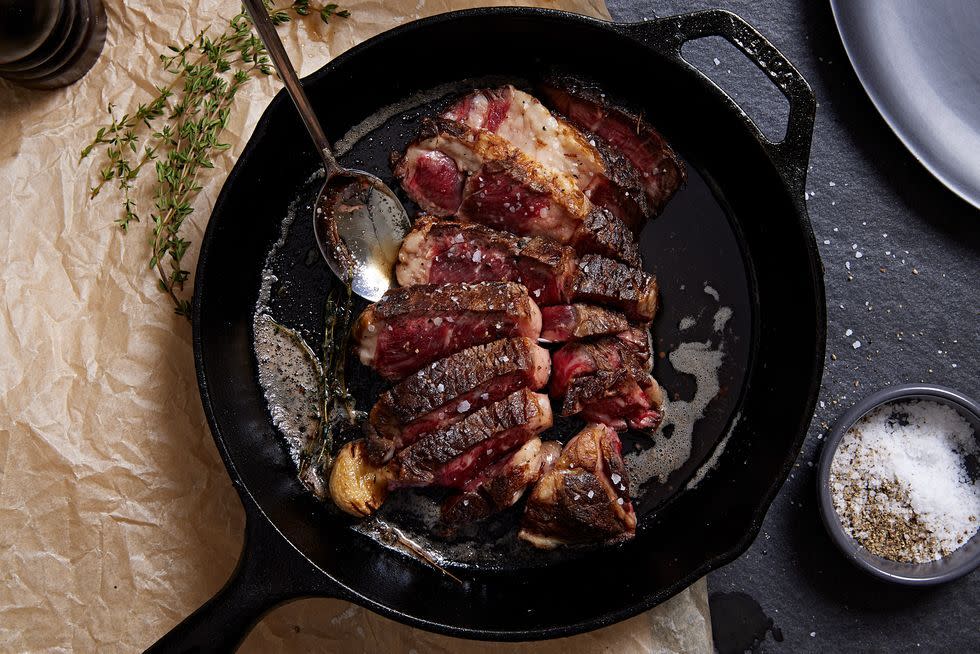
Grilled Tri-Tip
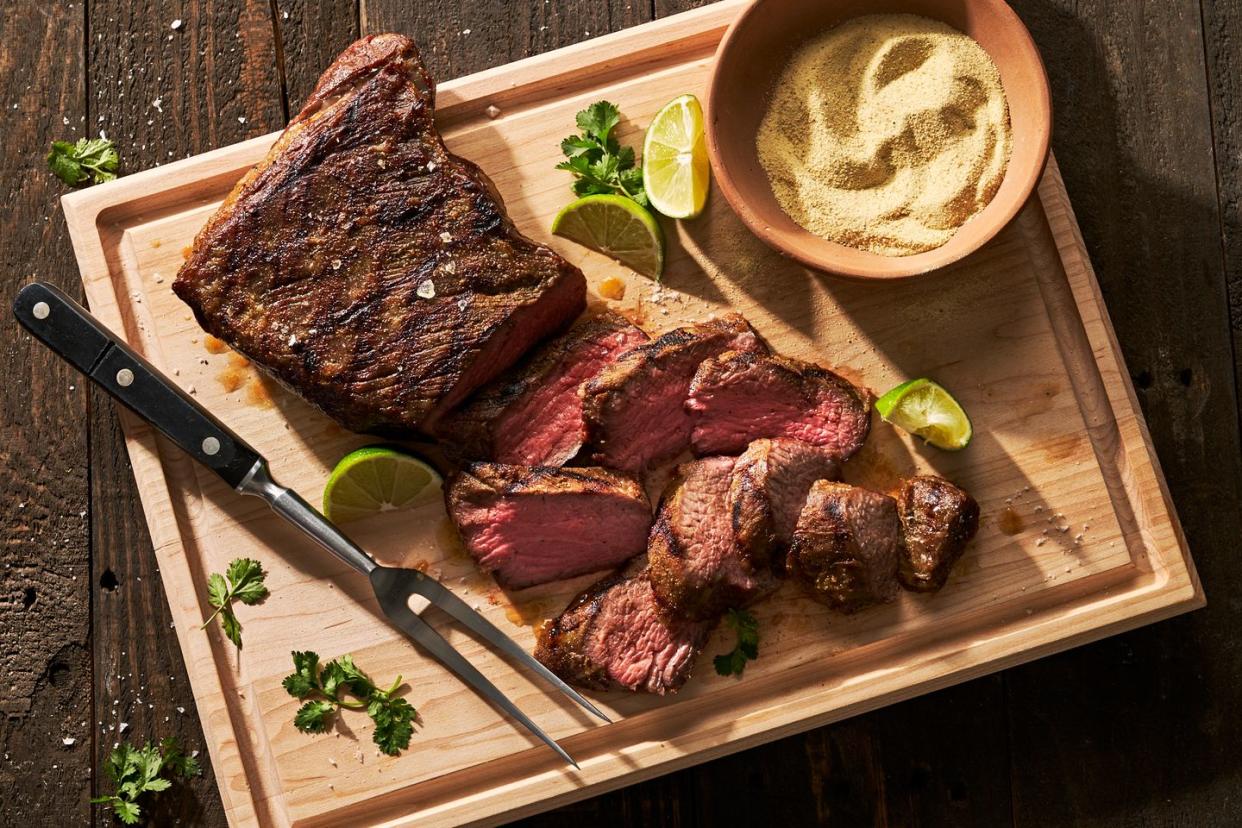
Carne Asada
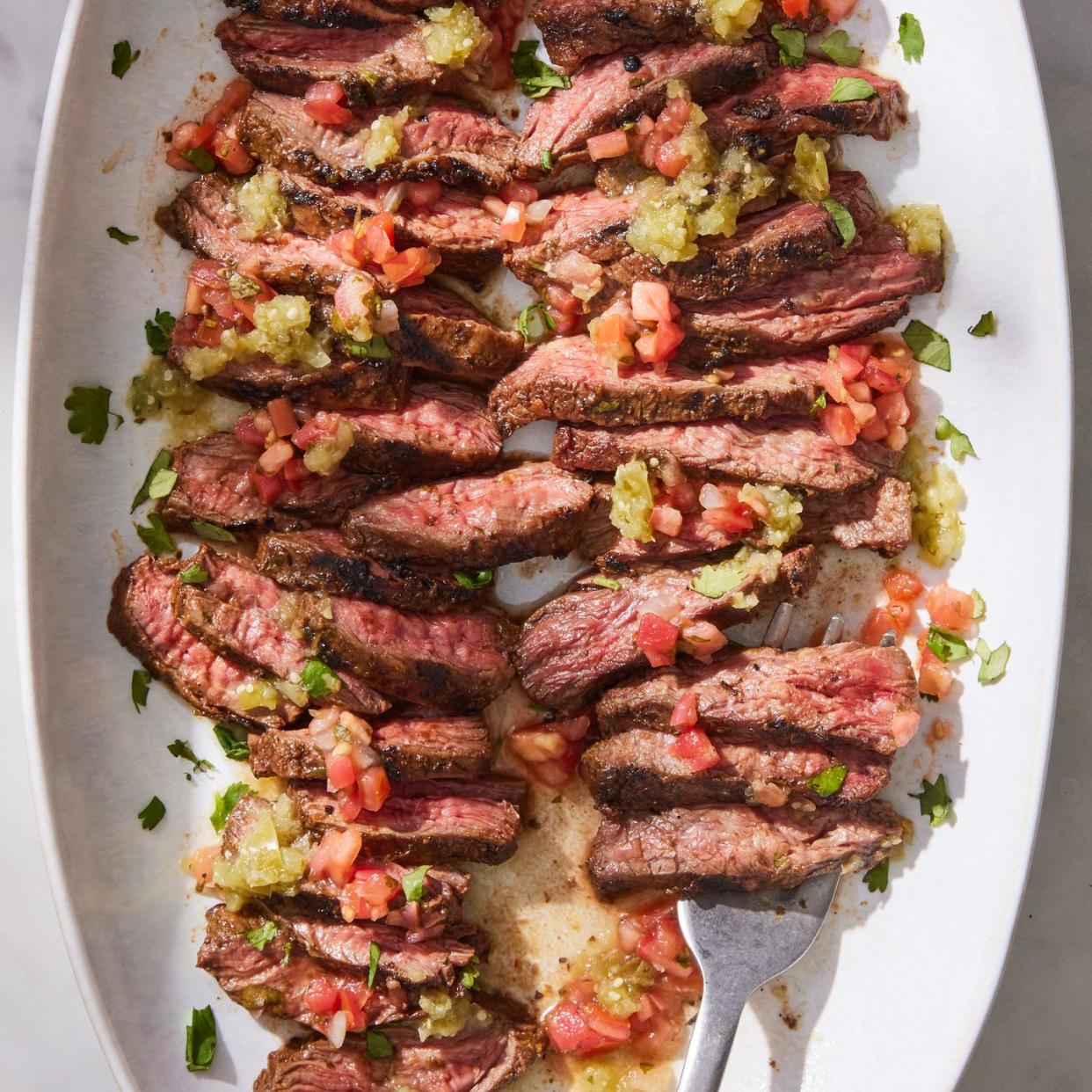
1. Which Cuts of Steak Should Be Marinated?
The steaks that benefit the most from a marinade are the ones that need a little extra love. They’re thin and tough, like a flank or a skirt steak. They are lean without the benefit of fat marbled throughout to add flavor, like a sirloin tip. Or they’re laden with a ton of connective tissue that typically takes a long time to break down, like a bottom round. If they’re not naturally bursting with juiciness and flavor, they’re a great candidate for marinades.
2. Ingredients To Add To Your Marinade
While you don’t need a recipe to make a marinade, there are a few key types of ingredients you always need to include.
Salt: According to Lonsdale, this is “the key component for a marinade.” Unlike all the other ingredients in a marinade, salt actually travels beyond the surface of the steak, seasoning it throughout and increasing its moisture retention, resulting in a juicier piece of meat.
Fat: A little fat (usually oil) in a marinade helps to distribute the salt as well as the flavor of other aromatics around the meat. It also helps prevent the steak from sticking while it’s being cooked.
Sugar: Sweetness from honey, maple syrup, or just plain sugar can provide a nice contrast to the salty fattiness of the meat. Sugars also help the steak caramelize, creating those rich browned flavors.
Acid: While not strictly necessary, a little citrus juice or vinegar can add a pleasant tang to marinades and counteract the richness of the oil and aromatics. Just be careful not to make your marinade too acidic, or the steak might turn mushy.
Aromatics: Alliums like garlic, scallion, and shallot, and hearty herbs such as rosemary and thyme are great additions to a marinade. Just be wary of super-pungent aromatics, such as raw mature onions, which can be overpowering if left to sit too long with the meat.
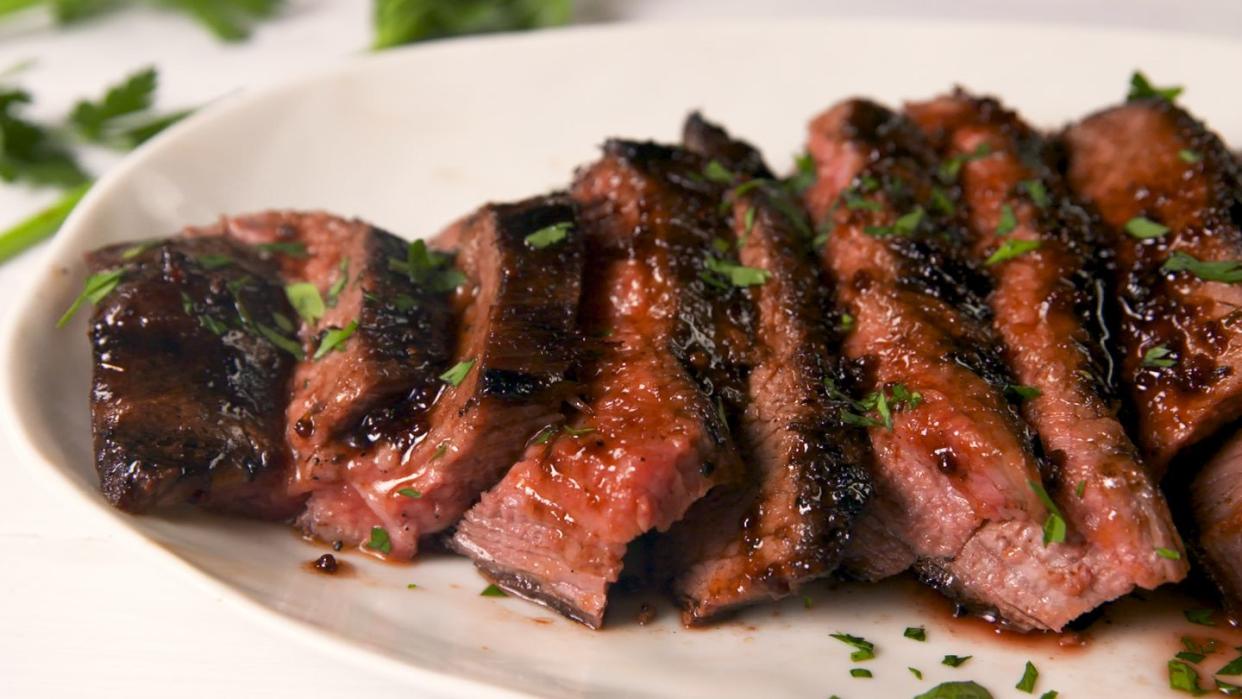
3. Taste Your Marinade
Before pouring your marinade over the steak, taste it! Does it need more salt? A tiny bit more sugar? More aromatics? Adjust and taste it again. “It should taste good and balanced,” Lonsdale says. Remember, if you love the flavor of the marinade on its own, you’ll love it on your steak.
4. Time Your Marinade Right
There’s no hard and fast rule for how long to marinate a steak; it really depends on the size of the steak and how much (if any) acid is in the marinade. As Trout warns, leaving the meat in an acidic solution for too long will cause the meat to take on an “overly sour flavor.” If your marinade isn’t too acidic, Lonsdale’s recommends “anywhere from 4 to 6 hours." If your steak is small, you might be able to get away with less.
5. Cut Up Your Steak—Or Don’t
To further cut down on marinating time (pun intended!), consider slicing the steak into smaller pieces before marinating. According to Trout, this allows the marinade “to come in contact with more surface area quickly,” reducing the overall time the meat needs to sit in the marinade. This works especially well for cuts such as flank or skirt steak, which are notoriously tough but can be made more tender by slicing thinly against the grain and then cooking quickly over high heat. Of course, this isn’t always the ideal solution: sometimes you want a large piece of steak to slice and serve at the table. In that case, leave it whole.
6. Cook It Well (Actually, Medium-Rare)
The same rules for cooking any unmarinated piece of steak apply to marinated steaks: thinner, leaner cuts like flank or skirt benefit from hot and fast cooking methods like grilling or broiling, while larger cuts with tons of connective tissue are better braised or stewed. Before cooking, be sure to remove the steak from the marinade and pat it dry. Any moisture left on the steak will sizzle and spit when the meat hits a hot surface and cause it to steam rather than sear. And no one wants steamed steak.
You Might Also Like






